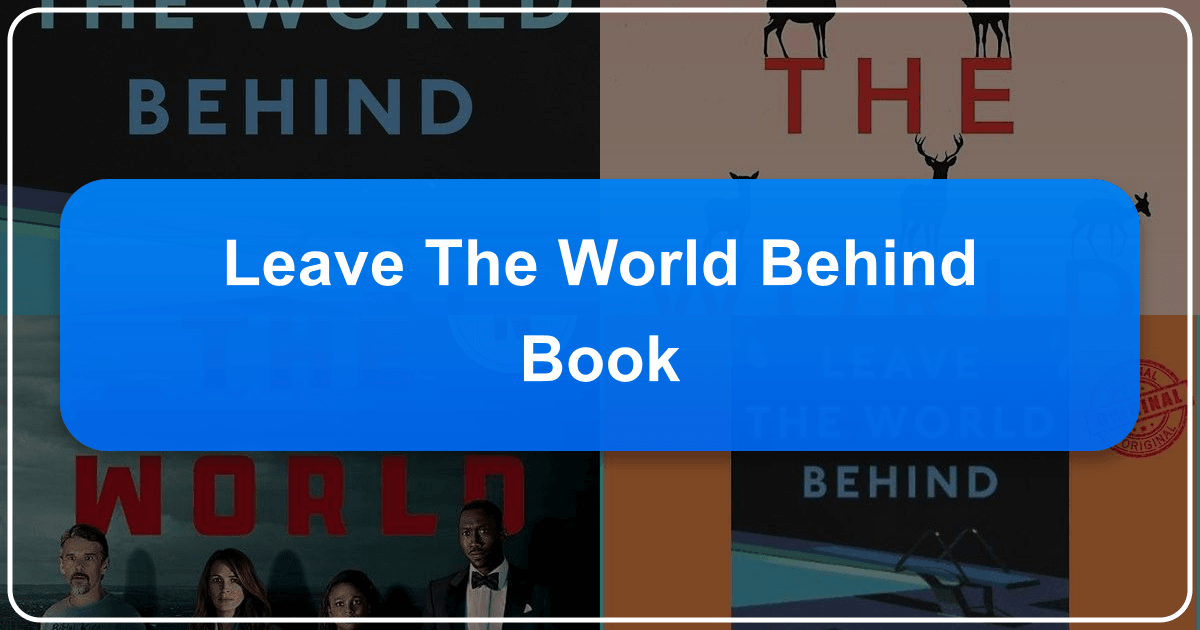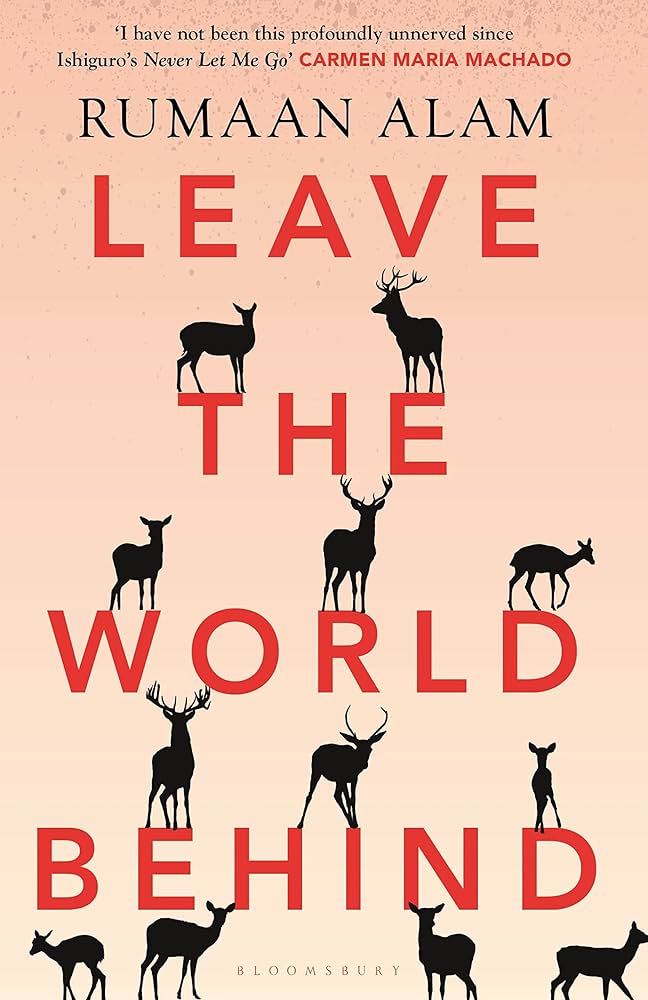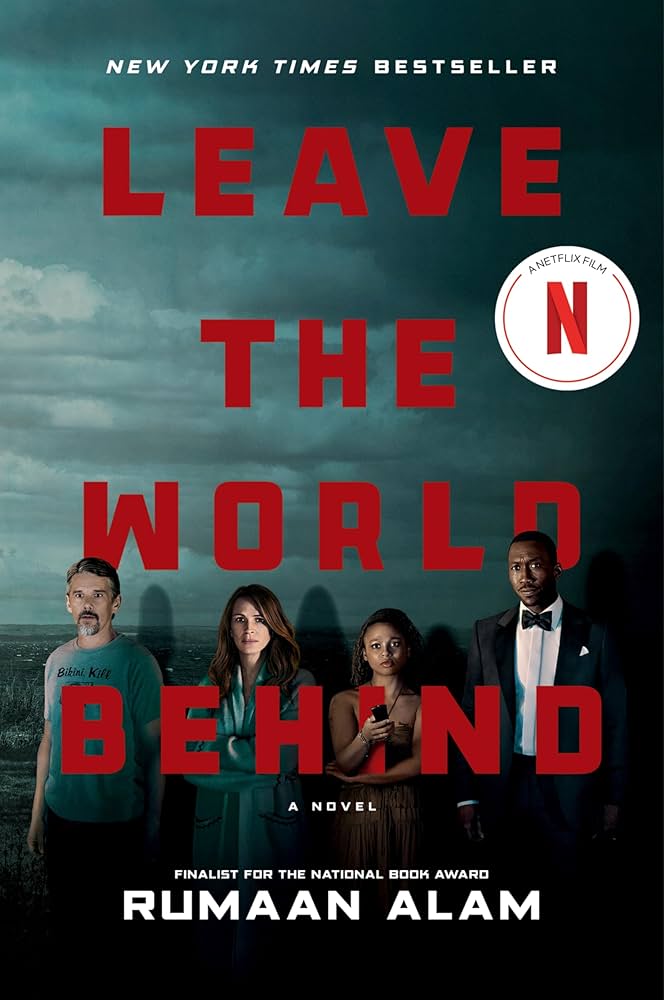Leave the World Behind: A Deep Dive into Rumaan Alam's Novel

Rumaan Alam’s Leave the World Behind is more than just a captivating thriller; it’s a poignant exploration of family dynamics, racial tensions, and the fragility of modern life. Published in 2020, the novel quickly gained traction, earning critical acclaim and numerous accolades, solidifying its position as a significant work of contemporary fiction. Its subsequent adaptation into a Netflix film further cemented its cultural impact, bringing the story’s anxieties to a wider audience. This in-depth analysis will examine Leave the World Behind across various facets, drawing upon the common themes found on book review websites and expanding on the novel’s literary merit, societal reflections, and lasting influence.
Genre and Literary Style

Leave the World Behind defies easy categorization, blending genres seamlessly. While primarily classified as a contemporary thriller, it possesses strong elements of literary fiction, science fiction, and even a touch of horror. Alam masterfully weaves a suspenseful narrative around a seemingly ordinary family vacation, gradually escalating the tension and unsettling the reader with subtle hints of impending doom. His prose is both elegant and economical, creating a sense of unease and immediacy. The narrative shifts perspectives between the two families at the heart of the story, offering a multifaceted view of the unfolding events and intensifying the reader’s suspense. This shifting perspective isn’t just a narrative device; it mirrors the fractured nature of communication and understanding in the face of crisis, highlighting the complexities of human interaction under pressure. The lack of explicit detail about the larger catastrophe unfolding outside the confines of the rented house enhances the novel’s ambiguity and psychological impact.
Themes and Motifs

Several potent themes underpin the narrative of Leave the World Behind. The central theme is the exploration of human nature under pressure, focusing on how societal inequalities and preconceived notions about race and class are exposed in a moment of crisis. The two families—a white, affluent family from New York City and a Black, older couple—are forced into close proximity, forcing a confrontation with their assumptions and biases. The power outage and the subsequent breakdown of communication serve as catalysts, revealing underlying tensions and vulnerabilities within and between the families. The ambiguity surrounding the external threat heightens the sense of isolation and forces the characters (and the reader) to confront their anxieties and fears.

Alam employs recurring motifs to enhance the narrative’s unsettling atmosphere. The imagery of the natural world—the abundant wildlife, the unsettling presence of deer, the misplaced flamingos—creates a sense of unease and foreshadowing. The descriptions of food and everyday consumer items highlight the stark contrast between the characters’ comfortable lives and the looming disaster. The repetitive descriptions of mundane aspects of vacation life—the purchase of groceries, the mundane activities—accentuate the growing anxiety and sense of displacement, contrasting the peaceful setting with the building tension.
Authorial Background and Influences
Rumaan Alam, the author of Leave the World Behind, is a prolific writer whose works often grapple with themes of family, social dynamics, and the anxieties of contemporary life. His previous novels, Rich and Pretty and That Kind of Mother, similarly explore the complexities of human relationships and the challenges of modern existence. Alam’s writing style is characterized by its precision, wit, and understated intensity, creating a captivating and often unsettling reading experience. The author himself has acknowledged influences ranging from Shirley Jackson’s gothic suspense to the apocalyptic visions of Cormac McCarthy. These influences are evident in Leave the World Behind’s careful pacing, ambiguous setting, and chilling exploration of human behavior in extreme circumstances.
Critical Reception and Awards
Upon its release, Leave the World Behind received widespread critical acclaim. It was praised for its suspenseful narrative, insightful character development, and the masterful way in which Alam tackled themes of race, class, and the anxieties of modern life. The novel’s unique structure and ambiguous ending further contributed to its critical success. The novel received several prominent awards nominations including the 2020 National Book Award for Fiction, underlining its high literary standing. The book’s ability to resonate with readers on both an emotional and intellectual level is a testament to Alam’s writing skill and its unique positioning in a culture increasingly grappling with a sense of impending uncertainty.
Cultural Impact and Adaptations
The novel’s success extends beyond literary circles. Leave the World Behind’s themes of societal breakdown and the human response to chaos have resonated deeply with readers, especially in the context of the global pandemic and increasing social and political unrest. Its popularity is a testament to its timeliness and its ability to tap into a collective sense of anxiety and uncertainty.
The book’s adaptation into a major motion picture, starring prominent actors like Julia Roberts and Mahershala Ali, demonstrates its significance in popular culture. The film adaptation allows a broader audience to engage with Alam’s work and further explore the novel’s complex themes. This adaptation further validates the story’s universal appeal and its ability to transcend literary boundaries and resonate within popular consciousness.
Reading and Learning
Reading Leave the World Behind offers significant educational value and opportunities for personal reflection. The novel prompts readers to consider the fragility of modern life and the ways in which societal structures can quickly collapse under pressure. The portrayal of the two families’ interactions highlights the complexities of race and class relations and the biases that can emerge even within seemingly tolerant individuals. The novel encourages readers to question their own assumptions and consider their responses to similar circumstances. It serves as a compelling examination of the individual and societal response to crisis, highlighting the resilience of human bonds but also the failings of human nature.
Life Lessons and Reading Habits
The most profound life lessons within Leave the World Behind revolve around the importance of empathy, adaptability, and the acceptance of uncertainty. The novel challenges readers to step outside of their own perspectives and consider the experiences of others. The characters’ struggles with fear, uncertainty, and loss encourage personal reflection on the reader’s own coping mechanisms and understanding of vulnerability. The novel’s ambiguous ending is not a sign of failure but a reflection of the unpredictable nature of life. This ambiguity encourages the reader to construct their own interpretations and grapple with the lingering questions presented by the narrative. The reading experience itself can be used to encourage a thoughtful and reflective reading habit, prompting discussions about the book’s multiple interpretations and themes.
Conclusion
Rumaan Alam’s Leave the World Behind is a powerful and thought-provoking novel that continues to resonate with readers and critics alike. Its unique blend of genres, its insightful exploration of human nature under pressure, and its ambiguous yet compelling narrative make it a significant work of contemporary fiction. Its cultural impact, highlighted by the film adaptation, further solidifies its position as a book that speaks to the anxieties and uncertainties of our time, offering both a captivating story and significant opportunities for personal growth and learning. The novel remains a relevant and powerful work, inviting readers to reflect on the fragility of our world and the importance of human connection in the face of uncertainty.